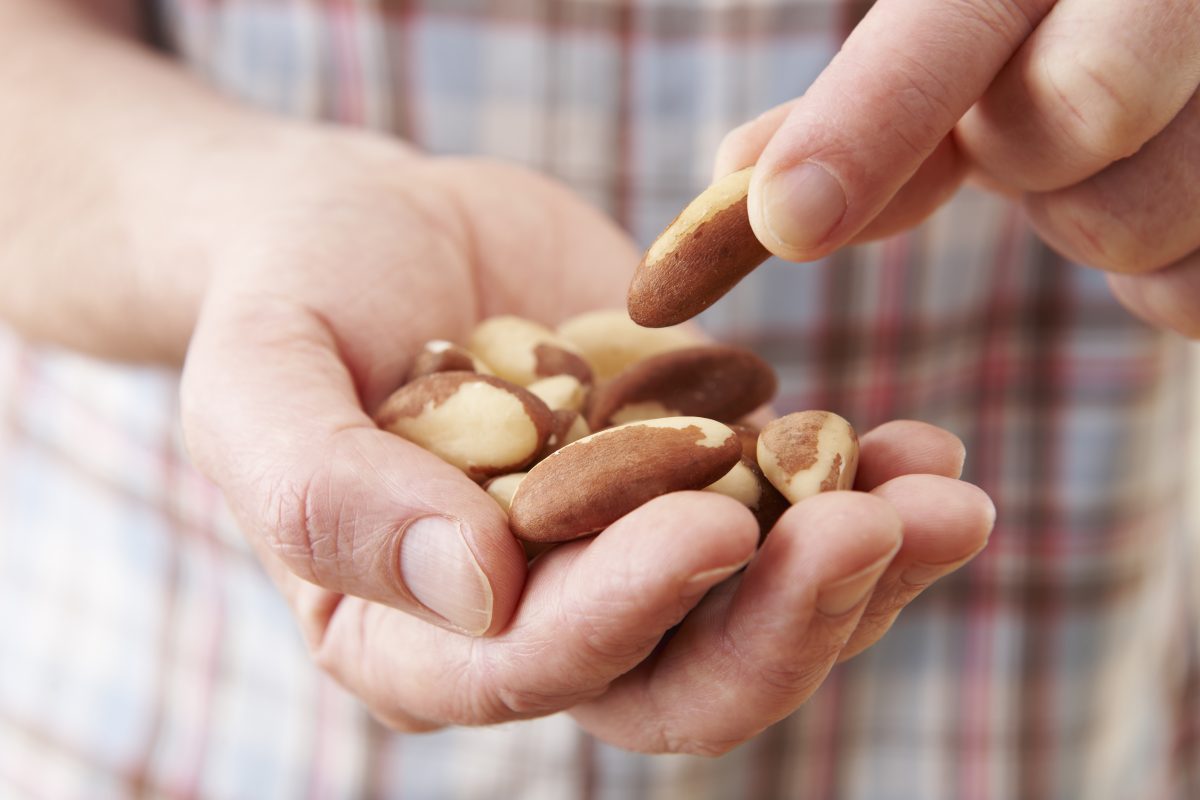About 60 percent of women and 40 percent of men over the age of 50 have low bone mass, and those numbers increase with age. The National Osteoporosis Foundation estimates that 50% of women and 25% of men over the age of 50 will have an osteoporosis-related fracture in their lifetime.
Bone is constantly being broken down (by cells called osteoclasts) and rebuilt (by cells called osteoblasts). In osteoporosis, there is an imbalance between bone formation and resorption, leading to a decrease in bone mass and consequently an increased risk of fractures. The best protection against osteoporosis is a combination of exercise and excellent nutrition. These factors tip the balance toward bone formation.
Weight training and strength training
When we increase muscle strength, we increase bone strength. The most effective way to strengthen bones and protect against osteoporosis-related fractures is with strength training. The mechanical forces produced by exercise stimulate the activity of bone-building osteoblasts, leading to denser, stronger bones, not just stronger muscles.
Weight-bearing exercises are great for improving balance and strengthening bones, and non-weight-bearing lower-body strength training also helps increase bone density. While swimming and bicycling are good for cardiovascular conditioning, they won’t help protect against osteoporosis like running or lifting weights. In women at risk of osteoporosis, back-strengthening exercises are especially beneficial and can provide long-lasting protection against spinal fractures.
For women, in addition to exercising with weights, I also recommend using a weighted vest for a few hours each day for stronger bones. A weighted vest can be worn not only during exercise, but also while working or shopping and bending, standing and moving throughout the day. Wearing a weighted vest also has other benefits, such as burning more calories, increasing core strength, and stabilizing muscles, thus improving balance and decreasing the risk of falls.
For a guide to exercises to strengthen bones, on my DVD Protection against osteoporosis for lifeI have developed a comprehensive approach that combines dietary and supplement advice with special exercises to strengthen bones, providing the information necessary to put an effective treatment against osteoporosis. prevention plan in action.
 In women at risk of osteoporosis, back-strengthening exercises are especially beneficial and can provide long-lasting protection against spinal fractures. By Prostock-studio/Shutterstock
In women at risk of osteoporosis, back-strengthening exercises are especially beneficial and can provide long-lasting protection against spinal fractures. By Prostock-studio/ShutterstockNutrients for building bones
The best foods for bone health are whole plant foods. Studies show that people who eat more fruits and vegetables have stronger bones.
-
Calcium: Vegetables, seeds and beans
Bone tissue is composed primarily of calcium phosphate and collagen, and ninety-nine percent of the body’s calcium is stored in the bones. The mixture of bone minerals with collagen fibers provides the bone with strength and flexibility.
A diet full of natural plant foods provides the calcium needed to build strong bones. Green vegetables in particular are rich sources of calcium. For example, a four-ounce serving of steamed kale has as much calcium as a cup of cow’s milk. Broccoli, bok choy, sesame seeds, and chickpeas are also great sources of calcium. Additionally, the body absorbs about 50% of the calcium from many green vegetables, compared to only 32% of the calcium from milk. High-dose calcium supplementation (1000 mg/day) is not recommended because several studies have linked high-dose calcium supplementation with an increased risk of cardiovascular disease. Also, high-dose calcium supplements have not been superior to lower doses in studies of bone fracture prevention.
-
Magnesium: nuts and seeds
Calcium is important, but it is not the only mineral that strengthens bones. Sixty percent of the body’s magnesium is found in the bones. Magnesium is an essential mineral crucial for all cells, it plays a structural role in bone tissue and is essential for bone formation. Magnesium deficiency decreases the activity of osteoblasts (cells that form bones) and promotes osteoporosis. Notably, nearly half of Americans do not meet the recommended intake for magnesium. Nuts and seeds are especially rich in magnesium.
-
Vitamin K1: Green vegetables
Vitamin K is a crucial component in maintaining healthy bones. A vitamin K-dependent protein called osteocalcin is the most abundant protein in bone tissue after collagen; this protein binds calcium and is crucial for bone mineralization. A higher intake of vitamin K1 is associated with lower rates of bone loss and fractures. Vitamin K exists as K1 and K2; the richest source of K1 is green vegetables and K2 is produced by microorganisms. It’s important to get both K1 from green vegetables and K2 from a supplement.
-
Vegetable protein: beans, seeds and nuts
Starting in middle age and especially after age 70, it becomes more important to ensure adequate protein intake for healthy bones. For most people following a Nutritarian diet, adequate protein for the maintenance of bone mass, muscle mass, and muscle strength with age can be easily achieved from seeds, nuts, and beans. Animal products can be added if muscle mass begins to drop too much on a completely vegan diet, despite adequate exercise.
-
Phytate: Beans, whole grains, nuts and seeds.
Phytate was once known as an “antinutrient,” a substance that prevents us from absorbing certain minerals; however, the phytate in plant foods may actually benefit bone health. Studies have found that women who consumed more phytate had higher bone mineral density or less bone loss over time. Phytate appears to help prevent osteoporosis by preventing bone breakdown by osteoclasts (cells that resorb bone).
-
Antioxidant-rich fruits and vegetables
A three-month trial of postmenopausal women who ate dried plums (compared to dried apples) daily found an increase in markers of bone formation, and a one-year trial found an increase in bone mineral density and a decrease in blood levels. of bone resorption markers. Prune polyphenols have been shown to suppress osteoclast activity. Additionally, higher markers of oxidative stress are linked to lower bone mineral density, suggesting that the antioxidant content of fruits and vegetables may be partially responsible for their bone health benefits. It is not that plums have special powers, however their polyphenol content is certainly higher than that of apples; Berries are also particularly rich in polyphenols.
-
Bone-healthy supplements: vitamin D and vitamin K2
The main source of vitamin D for most people is sun exposure, and vitamin K2 is not easily obtained from plant foods. Getting adequate amounts of these bone-building vitamins is important, and supplements are helpful. Vitamin D regulates the absorption of calcium and phosphorous, and vitamin D deficiency is known to increase the risk of fractures. Trials of vitamin K2 supplementation (which is low in plant foods) in postmenopausal women have shown substantial reductions in fracture risk: vertebral fracture by 60%, hip fracture by 77%, and all non-vertebral fractures by 1%. 81%.
Avoid foods that cause calcium loss
The worst foods for bone health are those that cause calcium to be washed out of the bones and lost in the urine.
- excess sodium promotes calcium excretion.
- Caffeine it also contributes to urinary calcium loss. High caffeine intake is associated with increased bone loss and osteoporotic fractures.
- soda, including diet and decaffeinated soft drinks, is associated with bone loss. Soft drink consumption increases parathyroid hormone (PTH) in the blood, which increases blood calcium concentrations by stimulating bone breakdown. This increased calcium in the blood is then excreted in the urine.
The Nutrient diet, combined with the conservative use of supplements (see vitamin advisor) assures people that they are achieving maximum protection against disease in the future. Achieving adequate muscle mass and bone mass with aging is one of the important benefits of a Nutritarian lifestyle.
Originally posted on DrFuhrman.com
.
